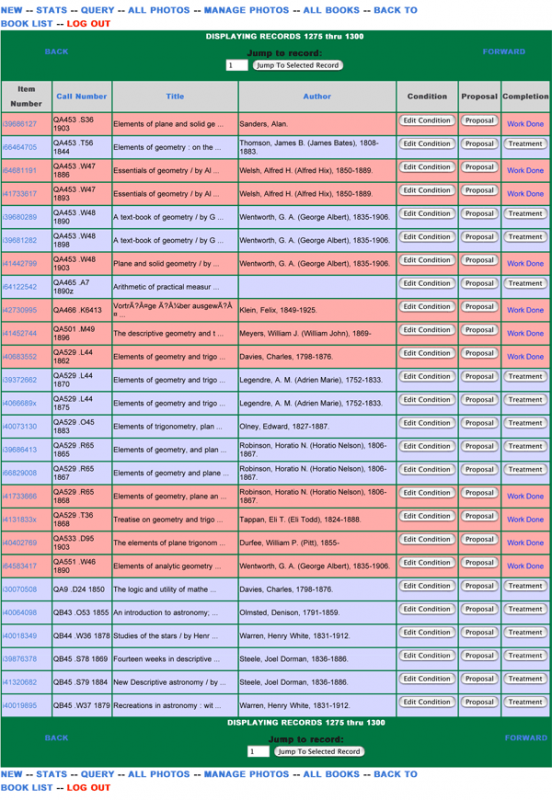Written Documentation
Condition Survey, Treatment Proposals and Treatment Reports
Part of the Conservation Code of Ethics is to record any alteration made to a cultural artifact. A treatment may drastically alter the state of a valuable, unique object that is library property; what it looked like before is a vital part of the historical record. This documentation takes two forms: written and photographs.
A condition survey is designed to give a clear snapshot of the book’s physical condition. Within a few minutes, each of the 1,500 books were examined thoroughly. Its current condition was described using standardized vocabulary and then recorded into the database. At the same time, a treatment proposal for the book was created. Again, using standardized vocabulary, a list of what needed to be done to conserve the book was decided on. The details of this initial proposal could change one the book was brought to the conservation lab, but it was accurate enough to batch like work together for a more efficient workflow. A change in the treatment proposal is not uncommon, since sometimes it is hard to asses the damage until the cover has been removed or the book disbound.
After the treatment is completed, a treatment report is written. For the Save America’s Treasures grant, this is another aspect of the conservation database. Each step of the treatment is reported and all materials used are listed. This enables future scholars to know how the book was conserved and what might have been altered from the original (such as a replacing a missing spine or adding new endsheets). The treatment report will also aid future conservators if further treatment is needed for the item.
Example Images of the Database

